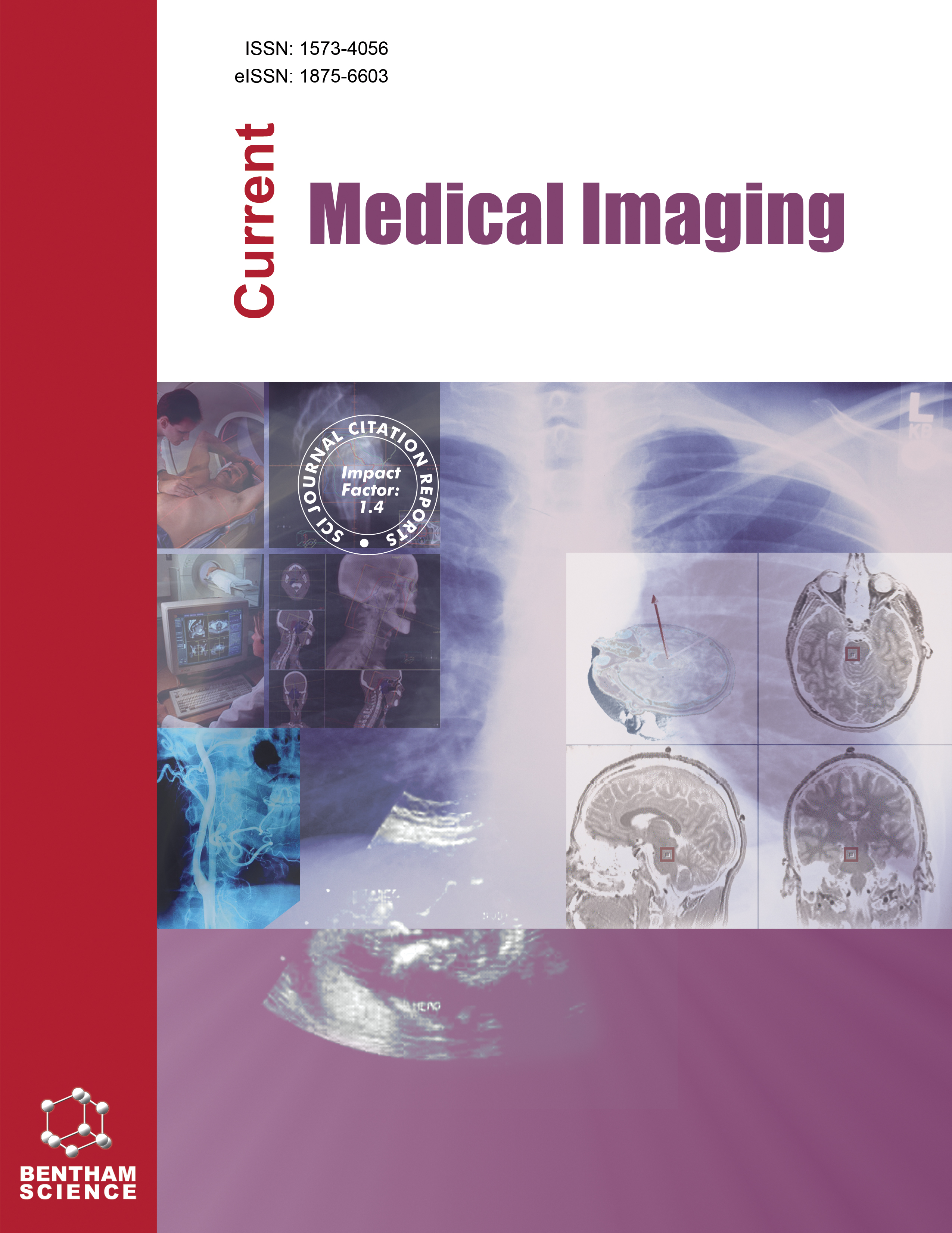- Home
- A-Z Publications
- Current Medical Imaging
- Previous Issues
- Volume 16, Issue 1, 2020
Current Medical Imaging - Volume 16, Issue 1, 2020
Volume 16, Issue 1, 2020
-
-
Knee Meniscus Segmentation and Tear Detection from MRI: A Review
More LessAuthors: Ahmet Saygili and Songül AlbayrakBackground: Automatic diagnostic systems in medical imaging provide useful information to support radiologists and other relevant experts. The systems that help radiologists in their analysis and diagnosis appear to be increasing. Discussion: Knee joints are intensively studied structures, as well. In this review, studies that automatically segment meniscal structures from the knee joint MR images and detect tears have been i Read More
-
-
-
Overview of Computer Aided Detection and Computer Aided Diagnosis Systems for Lung Nodule Detection in Computed Tomography
More LessAuthors: Shabana R. Ziyad, Venkatachalam Radha and Thavavel VayyapuriBackground: Lung cancer has become a major cause of cancer-related deaths. Detection of potentially malignant lung nodules is essential for the early diagnosis and clinical management of lung cancer. In clinical practice, the interpretation of Computed Tomography (CT) images is challenging for radiologists due to a large number of cases. There is a high rate of false positives in the manual findings. Computer aided detection s Read More
-
-
-
Convolutional Neural Network-based MR Image Analysis for Alzheimer’s Disease Classification
More LessBackground: In this study, we used a convolutional neural network (CNN) to classify Alzheimer’s disease (AD), mild cognitive impairment (MCI), and normal control (NC) subjects based on images of the hippocampus region extracted from magnetic resonance (MR) images of the brain. Methods: The datasets used in this study were obtained from the Alzheimer's Disease Neuroimaging Initiative (ADNI). To segment the hippocampa Read More
-
-
-
Driving Maximal Frequency Content and Natural Slopes Sharpening for Image Amplification with High Scale Factor
More LessBackground: In this paper, a method for adaptive Pure Interpolation (PI) in the frequency domain, with gradient auto-regularization, is proposed. Methods: The input image is transformed into the frequency domain and convolved with the Fourier Transform (FT) of a 2D sampling array (interpolation kernel) of initial size L × M. The Inverse Fourier Transform (IFT) is applied to the output coefficients and the edges are dete Read More
-
-
-
Melanoma Skin Cancer Detection based on Image Processing
More LessAuthors: Nadia S. Zghal and Nabil DerbelBackground: Skin cancer is one of the most common forms of cancers among humans. It can be classified as non-melanoma and melanoma. Although melanomas are less common than non-melanomas, the former is the most common cause of mortality. Therefore, it becomes necessary to develop a Computer-aided Diagnosis (CAD) aiming to detect this kind of lesion and enable the diagnosis of the disease at an early sta Read More
-
-
-
Evaluation of the Reliability of Interim PET/CT in the Hodgkin Lymphoma
More LessIntroduction: Positron-emission tomography (PET)/computerized tomography (CT) with 18F-fludeoxyglucose (FDG) has been come into use for risk assessment of Hodgkin lymphoma (HL) patients in recent years. The aim of our study is to evaluate the reliability of interim PET results according to Deauville score (DS), and also to compared PET findings with tumor reduction on CT. Methods: Forty-two HL patients (median 39, range Read More
-
-
-
Videofluoroscopic and Manometric Evaluation of Oropharyngeal and Esophageal Motility Disorders
More LessAuthors: Cesur Samanci, Yilmaz Onal and Ugur KormanBackground: Esophageal motility studies are performed in patients who have dysphagia that is not explained by stenosis. Diagnosis can be challenging and requires expertise in the interpretation of tests and symptoms. Aims: Our aim is to investigate the diagnostic value of videofluoroscopic swallowing study (VFSS) in combination with esophageal manometry. Study Design: This study has a prospective study Read More
-
-
-
Prone Myocardial Perfusion Imaging and Breast Attenuation: A Phantom Study
More LessBackground: Soft tissue attenuation artifacts are the most common cause of misinterpretation in myocardial perfusion Imaging (MPI). Few studies assessing the value of prone imaging in women have been published. Breast attenuation artifacts can be present in up to 40% of the MPI studies in women. Objectives: This study aimed at evaluating the potential impact of prone MPI on breast attenuation, with a critical analysis of act Read More
-
-
-
The Predictive Role of Abdominal Fat Parameters and Stone Density on SWL Outcomes
More LessAuthors: Coskun Kaya, Yurdaer Kaynak, Aral Karabag and Aykut AykaçBackground: Our aim was to detect the role of radiological abdominal fat parameters by tomography and stone density by plain X-ray on extracorporeal Shock Wave Lithotripsy (SWL) stone-free rate. Methods: The patients who had undergone SWL for a single opaque renal stone < 2 cm in diameter and proximal ureteric stone < 1 cm in diameter were collected retrospectively. The characteristics of patients and stone Read More
-
-
-
Torsion of Wandering Spleen: Importance of Splenic Density and Liver-to-Spleen Attenuation Ratio on CT
More LessAuthors: Yusuf K. Cetinoglu, Sebnem Karasu, Turan Acar, Muhsin Engin Uluc, Mehmet Haciyanli and Ozgur TosunBackground: Wandering spleen (WS) is a rare clinical condition which may cause fatal complication like torsion with subsequent infarction. Determination of splenic parenchyma viability is very important in deciding whether splenopexy rather than splenectomy is an option. Contrast- enhanced computed tomography (CECT) is important for the diagnosis of WS and assessment of the viability of spleen. Discussion: We r Read More
-
Volumes & issues
-
Volume 20 (2024)
-
Volume 19 (2023)
-
Volume 18 (2022)
-
Volume 17 (2021)
-
Volume 16 (2020)
-
Volume 15 (2019)
-
Volume 14 (2018)
-
Volume 13 (2017)
-
Volume 12 (2016)
-
Volume 11 (2015)
-
Volume 10 (2014)
-
Volume 9 (2013)
-
Volume 8 (2012)
-
Volume 7 (2011)
-
Volume 6 (2010)
-
Volume 5 (2009)
-
Volume 4 (2008)
-
Volume 3 (2007)
-
Volume 2 (2006)
-
Volume 1 (2005)
Most Read This Month
Article
content/journals/cmir
Journal
10
5
false
en


